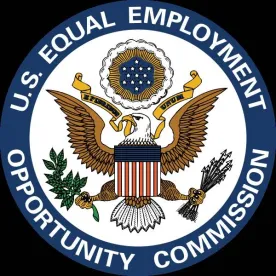On August 22, 2017, the U.S. District Court for the District of Columbia issued its decision in the American Association of Retired Persons, Inc.’s (AARP) challenge to the wellness program regulations issued by the U.S. Equal Employment Opportunity Commission (EEOC) in 2016 relating to the incentives allowable for participation in an employee health program under the Americans with Disabilities Act (ADA) and the Genetic Information Nondiscrimination Act of 2008 (GINA). The court held that the EEOC did not provide a reasonable explanation as to why the incentive limit of 30 percent of the cost of coverage rendered an employee health program voluntary rather than involuntary, but left the regulations in place for the time being.
By way of background, the EEOC issued regulations in 2016 that it stated were intended to harmonize the ADA and GINA requirements that participation in an employee health program be voluntary with the wellness program regulations under the Health Insurance Portability and Accountability Act (HIPAA). The EEOC regulations generally became effective January 1, 2017, and provide that an employee health program will be considered voluntary if the incentives offered to the employee to disclose ADA- and GINA-protected information do not exceed 30 percent of the cost of employee-only coverage.
In its October of 2016 lawsuit, the AARP asserted that the 30 percent incentive limit in the EEOC regulations was inconsistent with the requirement that employee health programs be voluntary under the ADA and GINA. Specifically, the AARP asserted that employees who could not afford health coverage without the incentive would be “forced to disclose their protected information when they otherwise would choose not to do so,” making participation in the program involuntary.
In its opinion, the court stated that the EEOC failed to offer a reasonable explanation to support its decision to use a 30 percent incentive limit, as the EEOC did not include “any concrete data, studies, or analysis that would support any particular incentive level as the threshold” for a program to be considered voluntary or involuntary. The court noted that while the EEOC stated that its intent in choosing the 30 percent incentive limit was to reconcile the provisions of the ADA, GINA, and HIPAA, the court was not convinced because the incentive limit is applied differently under HIPAA than it is under the EEOC regulations in two main respects: (1) the HIPAA incentive limit applies only to health contingent wellness programs (i.e., where the incentive is available only upon completion of an activity or a specified outcome), not participation-only wellness programs, while the EEOC regulations apply the incentive limit to all wellness or employee health programs (whether health contingent or participation only); and (2) the HIPAA limit is measured on the total cost of coverage, including family coverage, while the limit under the EEOC regulations is measured on employee-only coverage.
Although the court found in favor of the AARP, it did not vacate or invalidate the EEOC regulations; rather, it remanded the EEOC regulations back to the EEOC for further consideration. Thus, while the EEOC reconsiders the incentive limit and the meaning of “voluntary” under the ADA and GINA, the limits put in place by the EEOC regulations remain in effect. Employers are thus in the curious situation of attempting to comply with incentive limits that will likely be revised by the issuing agency.
Employers may want to keep a close eye on any future developments but in the interim can continue to comply with the EEOC regulations as currently drafted. Because the court provided neither a carrot nor a stick to spur the EEOC into action, there is no telling when or if the EEOC will issue any future guidance on the issue.






 />i
/>i

